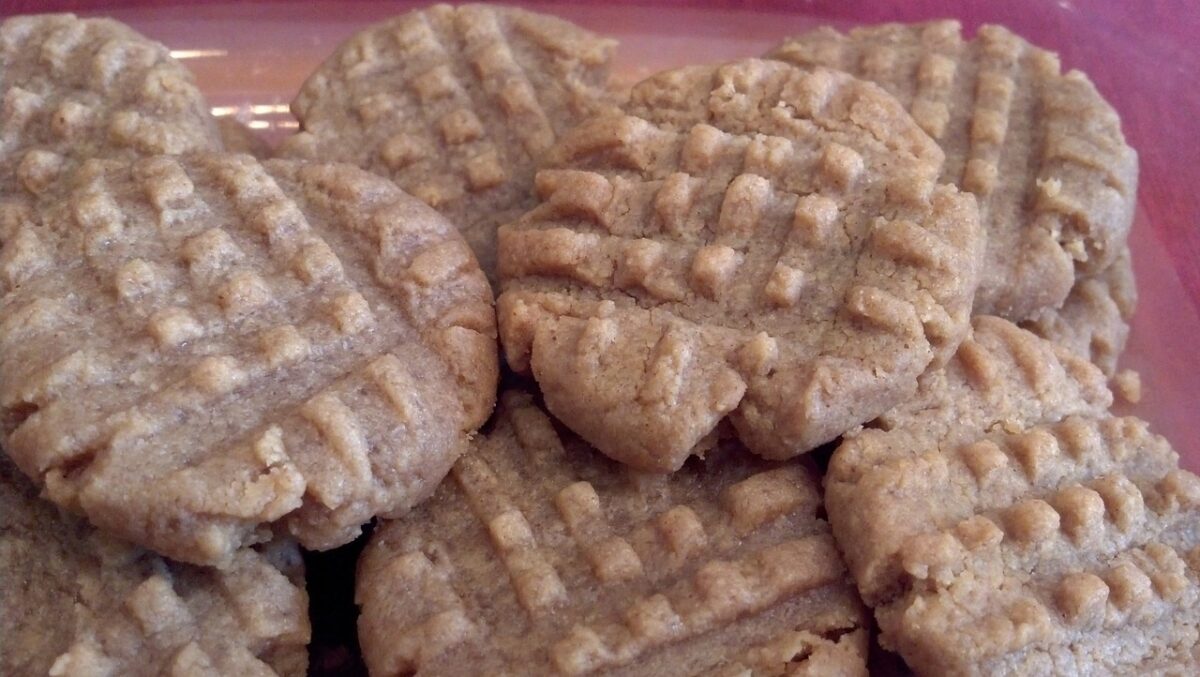Deprecated: Creation of dynamic property OMAPI_Elementor_Widget::$base is deprecated in /home3/brbyrdco/public_html/wp-content/plugins/optinmonster/OMAPI/Elementor/Widget.php on line 41
Baking Nostalgia: How to Make Old-Fashioned Peanut Butter Cookies
Do you ever find yourself craving the classic taste of peanut butter cookies that your grandma used to make? I had a craving flung on me the other day that refused to go away.
There’s something undeniably comforting about those old-fashioned peanut butter cookies – soft and chewy with just the right balance of sweet and salty. My craving hung on like white on rice, so there was nothing to do for it but make up a batch of cookies and hope the milk was good and cold.
Since my momma taught me to always share when something good comes along, here’s the recipe for some great little cookies.
Ingredients:
- 1 cup (2 sticks) unsalted butter, softened
- 1 cup granulated sugar
- 1 cup packed light brown sugar
- 2 large eggs
- 1 cup smooth peanut butter
- 1 teaspoon pure vanilla extract
- 2 1/2 cups all-purpose flour
- 1 1/2 teaspoons baking soda
- 1/2 teaspoon salt
- Additional granulated sugar for rolling
Instructions:
- Preheat Your Oven: Preheat your oven to 350°F (180°C) and line your baking sheets with parchment paper or silicone baking mats.
- Cream the Butter and Sugars: In a large mixing bowl, cream together the softened butter, granulated sugar, and brown sugar until the mixture is light and fluffy. This should take about 2-3 minutes.
- Add Eggs and Flavor: Beat in the eggs one at a time, followed by the peanut butter and vanilla extract. Mix until the ingredients are well combined.
- Combine Dry Ingredients: In a separate bowl, whisk together the flour, baking soda, and salt. Gradually add this dry mixture to the wet ingredients and mix until everything is incorporated. Be careful not to overmix, as it can lead to tough cookies.
- Shape the Dough: Scoop out rounded tablespoons of cookie dough and roll them into balls. Then, roll each ball in granulated sugar, coating it evenly.
- Create the Classic Crisscross Pattern: Place the sugared dough balls on the prepared baking sheets, leaving some space between them. Use a fork to create the classic crisscross pattern by gently pressing down on each cookie.
- Bake the Cookies: Bake the cookies in the preheated oven for 10-12 minutes or until they are lightly golden brown at the edges. Remember that the cookies will continue to cook a bit after you remove them from the oven due to the residual heat.
- Cool and Enjoy: Allow the cookies to cool on the baking sheets for a few minutes before transferring them to a wire rack to cool completely. Once they’re completely cooled, you can indulge in these delightful old-fashioned peanut butter cookies.
These cookies are perfect for dunking in a glass of cold milk or sharing with loved ones. Baking these old-fashioned peanut butter cookies is not just a culinary endeavor; it’s a journey back in time to simpler, cozier days. So, grab your apron, preheat your oven, and savor the delicious nostalgia these cookies have to offer. Enjoy!

